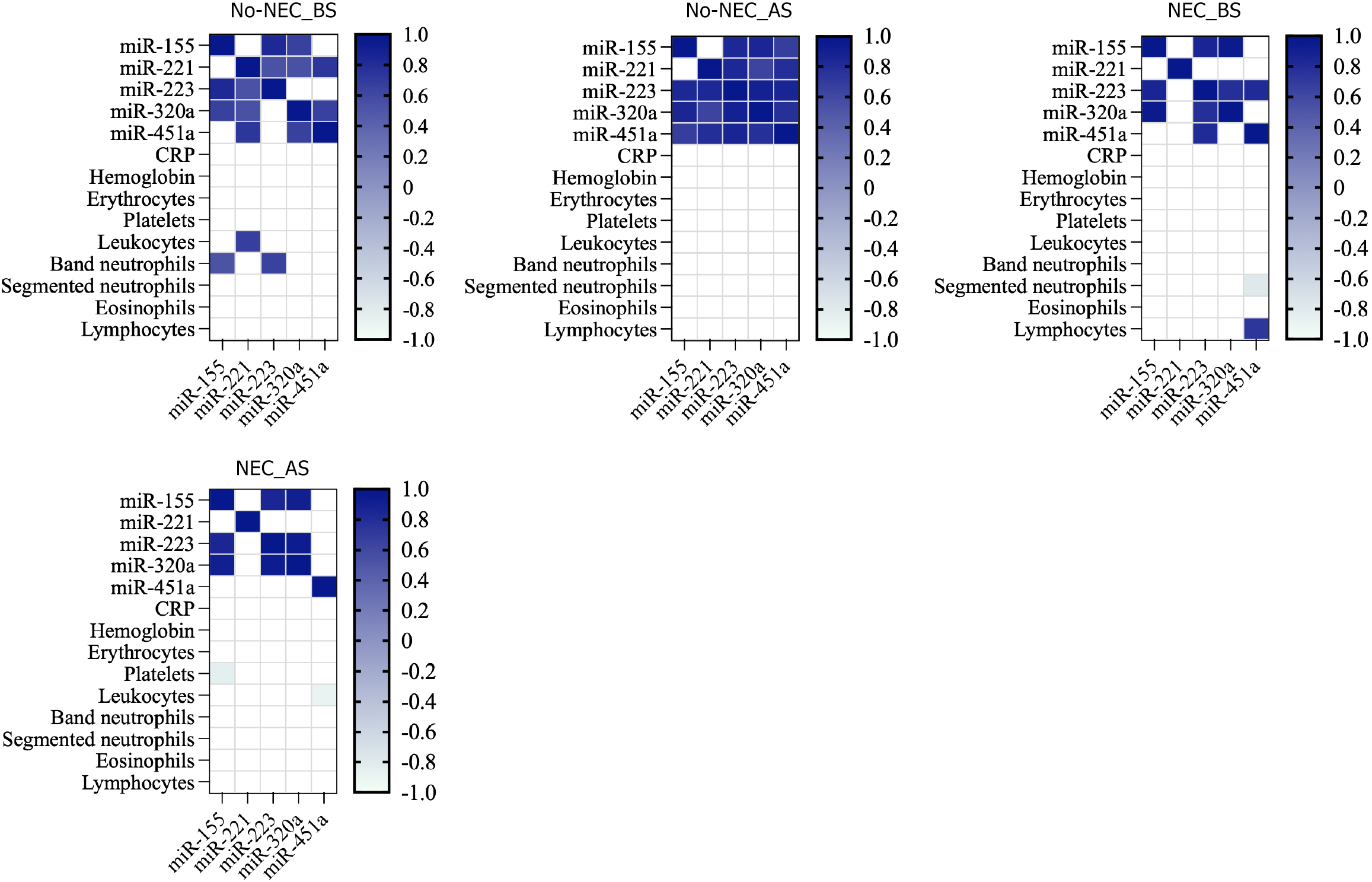Copyright
©The Author(s) 2025.
World J Clin Pediatr. Sep 9, 2025; 14(3): 103652
Published online Sep 9, 2025. doi: 10.5409/wjcp.v14.i3.103652
Published online Sep 9, 2025. doi: 10.5409/wjcp.v14.i3.103652
Figure 1 Diagnostic potential of the studied microRNAs in the plasma samples of term newborns with critical congenital heart defects in distinguishing the risk of necrotizing enterocolitis development.
A: The relative expression levels of target microRNAs (miRs); B: Receiver operator characteristic (ROC) curve for each target miR in the preoperative period; C: ROC curve of each target miRs in the postoperative period; D: ROC curve of the combined three miRs (miR-155 + miR-223 + miR-320a) vs miR-320a alone for predicting necrotizing enterocolitis (NEC) development before clinical symptoms; E: ROC analysis statistics for the studied miRs during the perioperative period. No-NEC_BS and No-NEC_AS represent no-NEC newborns before and after cardiac surgery, NEC_BS and NEC_AS represent NEC newborns before and after cardiac surgery, respectively. AUC: Area under the curve; MiRs: MicroRNAs; NEC: Necrotizing enterocolitis.
Figure 2 Correlation heatmap between the plasma microRNA levels and clinical laboratory parameters of term newborns with critical congenital heart defects across the perioperative period.
The color scale bars represent nonparametric Spearman correlations. The red color indicates a strong positive correlation, while purple color indicates a strong negative correlation. Only significant correlations are shown (P < 0.05). No necrotizing enterocolitis (NEC)_BS and No-NEC_AS represent newborns without NEC before and after cardiac surgery; NEC_BS and NEC_AS represent newborns, who developed postoperative NEC, before and after cardiac surgery, respectively. CRP: C-reactive protein; MiRs: MicroRNAs; NEC: Necrotizing enterocolitis.
- Citation: Zaikova EK, Kaplina AV, Petrova NA, Pervunina TM, Golovkin AS, Kostareva AA, Kalinina OV. MicroRNA-320а as a novel biomarker at preclinical stage of necrotizing enterocolitis in term neonates with congenital heart defects. World J Clin Pediatr 2025; 14(3): 103652
- URL: https://www.wjgnet.com/2219-2808/full/v14/i3/103652.htm
- DOI: https://dx.doi.org/10.5409/wjcp.v14.i3.103652










